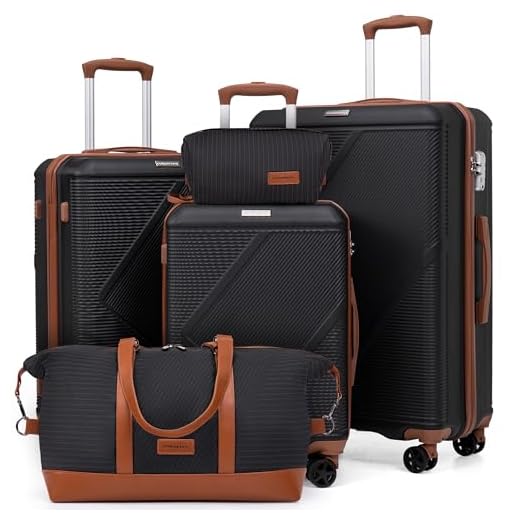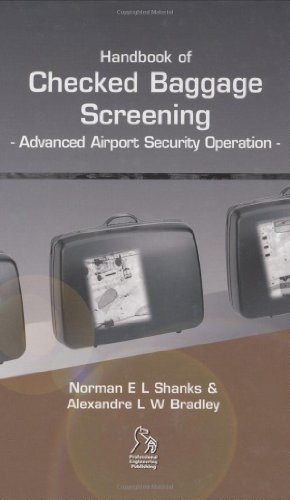

Short answer: Most passengers do not need to drop bags again when traveling on a single reservation with the same carrier or with interline partners; confirm at the originating check-in desk and verify each bag tag lists the final destination.
Standard practice: when all segments sit on one itinerary, agents usually tag items through to the end point. Exceptions occur with separate itineraries, self-transfer between different airports, carriers lacking a baggage agreement, or journeys that cross international borders and trigger customs collection. A visible destination code on the tag is the fastest confirmation that items were checked to the final stop.
Timing and minimum connection guidance: typical minimum connection times (MCT) inside the same terminal range from 30 to 45 minutes; transfers between terminals commonly require 45 to 90 minutes. Baggage drop cutoffs for within-country departures generally run 30–60 minutes before scheduled departure; some carriers set a 45-minute or 60-minute limit for peak routes. When transfer windows approach MCT, plan for boarding gate changes, security lines, and possible ground transport between terminals.
Practical checklist: book segments on one record locator when possible; request final-destination tagging at check-in; photograph bag tags and retain receipts; place essentials and a change of clothes in a carry-on; check carrier policies online for bag-through rules and cutoff times; allow extra buffer when tickets are separate or when switching to a low-cost carrier that often requires bag drop at a different counter.
If items arrive at an intermediate stop: agents at the transfer terminal can usually assist with immediate onward check if the ticketing supports it, but when tickets are independent, plan to collect and re-deposit items, and budget 60–120 minutes for that process and security re-entry.
Must checked baggage be tendered again during an intra‑country transfer?
If the itinerary is on a single ticket and both segments operate under the same carrier or partner airlines, checked baggage is normally tagged through to the final airport; collection at the transfer point is unnecessary.
Concrete checks before departure
Confirm the tag: the paper or electronic bag tag should display the final three‑letter airport code (examples: LAX, JFK, ORD). If the tag lists only the first segment’s airport, the bag will require manual claim and re‑drop at the connection. Ask the agent at the check‑in desk to print a through‑check tag when booking is combined on one itinerary.
Boarding documentation: when boarding passes for all segments are issued at first check‑in, baggage transfer is far more likely to be automatic; separate boarding passes collected later often indicate self‑transfer obligations.
Timelines and exceptions
Minimum transfer times for automatic transfer: same‑carrier transfers – 45–60 minutes; partner/alliance transfers – 60–90 minutes. Separate‑ticket itineraries typically require 90–120 minutes to allow claim, terminal transfer, and re‑deposit. Airports that frequently force bag claim between segments include cases of terminal changes without airside connections, low‑cost carrier to network carrier switches, and itineraries beginning or ending at remote gates with limited ground‑handling agreements.
Practical recommendations: keep passports, medication, electronics, and an outfit in a carry bag; verify the bag tag at check‑in; allow extra time for separate tickets or terminal transfers; photograph the bag tag barcode and record the tag number at drop‑off. For a durable daypack suitable for keeping essentials accessible during transfers, consider this best backpack for engineers.
Verify that the hold bag is tagged to the final in-country destination at check-in
Request the agent to display the printed bag tag and confirm the three-letter IATA code on the tag matches the final in-country airport code shown on the itinerary or boarding document; photograph the tag plus the boarding receipt immediately.
What to inspect on the tag
Check the line labeled “TO” or the prominent three-letter code – that code must equal the ultimate arrival airport. Verify there is no single-leg routing code only (example: tag shows FIRST-STOP instead of FINAL-DEST). Look for carrier routing stickers or an interline note (carrier codes chained like AA/BA) that indicate automatic transfer between operators.
Scenarios and actions
Single-reservation itineraries: agent can usually issue a tag to final airport; if tag shows only the first sector code, request correction before leaving the counter. Separate reservations on one ticketed name: ask explicitly whether automatic transfer between carriers is confirmed; if agent indicates manual collection at transfer, plan for collection and drop at the transfer airport’s transfer desk. Retain the baggage receipt stub as proof of tag and routing.
Allow extra transfer buffer when transfer time under 60 minutes, and confirm at the counter whether the tag includes a “through” or final-destination indicator rather than a single-leg marker. For families with infants, consider a compact carry item – see best backpack diaper bag for travel. For destination planning ideas during layovers or after arrival, see best aquarium in san diego ca.
Actions at the initial airport when bags must be claimed and retagged
Immediate steps
Proceed straight from arrival gate to the designated claim carousel, collect checked bags, verify destination tag on each item, then bring items and boarding document for the next leg to the airline transfer or ticket counter for retagging.
Present boarding pass for the onward segment, government ID or passport, and the baggage receipt stub; photograph bag tags and receipt before leaving the carousel.
If an agent indicates interline tagging is possible, request the agent to tag items through to the final destination and confirm tag numbers match the boarding document for the next leg.
Timing, queues and alternatives
Allocate at least 45–90 minutes between scheduled arrival and departure when collection and retagging is required: typical breakdown – 10–25 minutes to claim, 5–20 minutes at the airline counter, 10–30 minutes for security re‑screening if needed.
If time is under 45 minutes, ask the airline desk for priority handling or escort to the transfer counter; if counters are closed, locate the airline baggage office or ground handling team for manual tagging.
Keep essentials (medication, documents, chargers) in a carry-on rather than in checked items; if an item must remain with passenger, request a temporary retain tag and confirm pick-up point at the departure gate.
For missing or damaged tags, obtain a written irregularity report at the airline baggage service office and keep that report number when leaving the terminal; for fee questions, request a printed breakdown before accepting any paid service.
Minimum connection time needed to collect, recheck bags and clear security for domestic transfers
Recommended minimum transfer window: 90–120 minutes for single-ticket itineraries requiring pickup and drop-off of checked bag(s); 120–180 minutes when changing carriers or transiting major hubs (ATL, LAX, ORD, DFW, JFK, SFO, IAH).
Typical time components (per leg)
Deplaning and gate exit: 8–20 minutes (widebody or full flight toward upper end).
Inter-terminal transfer: 5–45 minutes (walk, shuttle, people-mover; airports with remote gates or off-site terminals require longer).
Baggage arrival and claim: 12–30 minutes from wheels down to first bag; busy periods or shared belts add delay.
Bag drop / ticket counter queue for the onward segment: 8–25 minutes (self-service kiosks faster; staffed counters slower).
Security re-screen (TSA): 5–40 minutes with PreCheck/CLEAR; 20–60 minutes without, peak-hour spikes possible.
Recommended operational buffer: 15–30 minutes to absorb late arrival, slow belts, or long lines.
Practical windows by scenario
Small regional airport to small regional airport (same terminal, single carrier): 60–75 minutes often sufficient if aircraft departs on time and checked bag(s) are handled efficiently.
Single-carrier transfer, same airport but different terminal: 90–120 minutes recommended to allow inter-terminal transit plus baggage handling and security.
Different carriers or separate tickets: 120–180 minutes strongly advised; separate itineraries carry no interlining protection and ticket reissue or bag drop can introduce long queues.
Major-hub transfers during peak hours: plan toward the high end of ranges (120–180 minutes) because long walking distances, frequent gate changes and crowded security add cumulative delay.
Speed-up measures: book on one ticket to trigger airline protection; travel with carry-on only when possible; select itineraries within the same terminal; enroll in PreCheck/CLEAR to slash security time; allow an extra 15–30 minutes above the airline’s published Minimum Connection Time (MCT) for real-world conditions.
Airline relationships, codeshares and separate tickets: effects on bag transfer
Prefer a single-ticket itinerary on carriers that maintain interline or alliance partnerships to reduce the chance of claiming and dropping bags at a transfer airport.
- Single reservation on one carrier – On the same PNR, checked baggage typically receives a tag to the final three-letter airport code and moves through all segments under that ticketed itinerary.
- Single reservation across multiple carriers (codeshare / interline on one ticket) – When all segments appear on one ticket, most major network carriers and alliance partners accept through-tagging. Codeshare status alone does not guarantee acceptance; an interline agreement between the operating and marketing carriers is the operative factor.
- Codeshare where marketing and operating carriers differ – If sold as a single itinerary, the operating carrier usually issues the bag tag. If segments are ticketed separately between marketing and operator, the operating carrier may treat checked items as originating at its own departure airport.
- Separate tickets (different PNRs) – Standard practice across most airlines: bags treated as originating at the initial check-in point. Expect collection at the transfer airport and a fresh check-in with the next carrier unless an explicit interline transfer is documented in advance.
- Low-cost carriers and ULCCs – Many ultra-low-cost business models lack interline connectivity. Transfers between an ULCC and a legacy carrier commonly require bag pickup and new check-in, even when connection time is tight.
- Regional affiliates and feeders – Flights operated by a mainline carrier’s regional partner (same-ticket) normally accept through-tagging. Independent regionals without formal partner agreements may not.
- Exceptions and manual handling – Some airlines can arrange one-off transfers between separate tickets via back-office interline processing, but that requires prior coordination, agent approval, and extra processing time; this remains rare and not guaranteed.
Practical evidence to request at check-in: a bag tag showing the final airport code, any interline notation or through-tag indicator, and confirmation printed on the itinerary or receipt when transfers across carriers are accepted. When itineraries exist on separate PNRs, obtain written acknowledgment if the first carrier agrees to pass items to the next operator.








